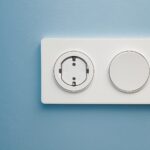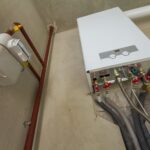Understanding the importance of proper ventilation
Ventilation plays a crucial role in maintaining indoor air quality. It helps remove pollutants, excess moisture, and odors from enclosed spaces. Proper ventilation systems can significantly improve the comfort and health of occupants. In residential buildings, ventilation is essential for preventing mold growth and reducing allergens. Commercial spaces benefit from ventilation by creating a more productive environment for employees. The American Society of Heating, Refrigerating and Air-Conditioning Engineers (ASHRAE) recommends a minimum of 0.35 air changes per hour for residential buildings.
Ventilation https://onninen.pl/en/products/Air-conditioning-and-ventilation/Ventilation systems come in various types, each suited for different applications. Natural ventilation relies on wind and temperature differences to move air. Mechanical ventilation uses fans and ducts to circulate air. Hybrid systems combine both natural and mechanical methods. The choice of system depends on factors such as building size, occupancy, and local climate. Energy-efficient ventilation solutions can help reduce heating and cooling costs by up to 30%.
Proper ventilation design considers air exchange rates, airflow patterns, and pressure differences. These factors ensure effective distribution of fresh air throughout the space. Ventilation systems should be sized according to the building’s volume and occupancy. For example, a typical office space requires 15-20 cubic feet per minute (CFM) of fresh air per person. Regular maintenance of ventilation systems is crucial for optimal performance. This includes cleaning or replacing filters, inspecting ductwork, and calibrating controls.
Indoor air can be up to five times more polluted than outdoor air, according to the Environmental Protection Agency (EPA). Ventilation helps mitigate this issue by diluting indoor pollutants with fresh outdoor air. It also helps control humidity levels, which should ideally be kept between 30% and 50%. High humidity can lead to mold growth, while low humidity can cause respiratory discomfort. Ventilation systems can be integrated with other HVAC components for comprehensive indoor air quality management.
The benefits of proper ventilation extend beyond air quality. Well-ventilated spaces can improve cognitive function and productivity. A Harvard study found that employees in well-ventilated offices scored 61% higher on cognitive function tests. Ventilation also helps reduce energy costs by removing excess heat and moisture. This can lower the load on air conditioning systems, especially in commercial and industrial settings. Proper ventilation is essential for compliance with building codes and regulations in many jurisdictions.
Exploring ductless ventilation options
Ductless ventilation systems offer an alternative to traditional ducted systems. These solutions are ideal for buildings where installing ductwork is impractical or costly. Ductless ventilation https://onninen.pl/en/products/Air-conditioning-and-ventilation/Ventilation/Ductless-ventilation units are typically compact and can be installed directly on walls or ceilings. They operate by drawing in fresh air from outside and expelling stale air, often through the same unit. This type of system is highly energy-efficient, with some models achieving up to 30% energy savings compared to ducted systems.
One popular ductless ventilation option is the heat recovery ventilator (HRV). HRVs exchange heat between incoming and outgoing air streams, reducing energy loss. These units can recover up to 85% of the heat from exhaust air. Another option is the energy recovery ventilator (ERV), which transfers both heat and moisture. ERVs are particularly useful in humid climates, helping to maintain comfortable indoor humidity levels. Both HRVs and ERVs can be standalone units or integrated into existing HVAC systems.
Ductless ventilation systems offer several advantages over traditional ducted systems. They require less space and are easier to install, making them suitable for retrofitting older buildings. These systems allow for zone-specific ventilation, providing greater control over individual room environments. Maintenance is generally simpler, as there are no ducts to clean. However, filters in ductless units may need more frequent replacement, typically every 3-6 months.
When selecting a ductless ventilation system, consider factors such as airflow capacity, noise levels, and energy efficiency ratings. A typical residential unit should provide 40-80 CFM of airflow per room. Noise levels should ideally be below 30 decibels for bedroom installations. Look for ENERGY STAR certified models, which can be up to 40% more efficient than standard units. Some ductless ventilation systems come with additional features like air purification or dehumidification capabilities.
Installation of ductless ventilation systems requires careful planning. Units should be placed to maximize air circulation and avoid short-cycling. Professional installation is recommended to ensure proper sizing and placement. The cost of ductless ventilation systems can vary widely, ranging from $500 to $2,500 per unit, depending on features and capacity. While initial costs may be higher than some ducted options, long-term energy savings and reduced maintenance can offset this investment.
Selecting the right ventilation ducts and fittings
Ventilation ducts and fittings are essential components of any ducted ventilation system. These elements transport air throughout the building, connecting the main ventilation unit to individual rooms or zones. Proper selection of ducts and fittings is crucial for system efficiency and longevity. Factors to consider include material, size, insulation, and air tightness. Common duct materials include galvanized steel, aluminum, and flexible plastic.
The size of ventilation ducts is determined by the required airflow rate and the system’s static pressure. Undersized ducts can lead to increased energy consumption and reduced air quality. A general rule of thumb is to allow 1 square inch of duct cross-sectional area for every 2 CFM of airflow. However, precise calculations should be performed for each specific application. Duct sizing software can help ensure accurate specifications for complex systems.
Insulation is crucial for maintaining air temperature and preventing condensation in ventilation ducts. Ducts in unconditioned spaces should have a minimum R-value of 6, according to the International Energy Conservation Code. Proper insulation can reduce heat loss or gain by up to 30%. Air-tight sealing of ducts is equally important, as leaky ducts can reduce system efficiency by up to 20%. Use mastic sealant or metal-backed tape for sealing joints and connections.
Ventilation ducts and fittings https://onninen.pl/en/products/Air-conditioning-and-ventilation/Ventilation/Ventilation-ducts-and-fittings come in various shapes and sizes to accommodate different installation requirements. Round ducts are most common due to their efficiency and ease of installation. Rectangular ducts are used where space is limited. Fittings such as elbows, reducers, and tees allow for changes in direction and size. Choose fittings with smooth interior surfaces to minimize air resistance and noise.
Regular inspection and cleaning of ventilation ducts are essential for maintaining system performance. The National Air Duct Cleaners Association recommends cleaning ducts every 3-5 years for residential systems. Commercial systems may require more frequent cleaning, depending on usage. When installing new ducts, consider access points for future cleaning and maintenance. Proper installation and maintenance of ducts and fittings can extend the life of the ventilation system and improve indoor air quality.
Optimizing ventilation system performance
Optimizing ventilation system performance involves a combination of proper design, installation, and ongoing maintenance. Start by conducting a thorough assessment of the building’s ventilation needs. This includes calculating required air exchange rates based on occupancy and space usage. Use tools like CO2 monitors to measure air quality and identify areas needing improved ventilation. Aim for CO2 levels below 1000 parts per million (ppm) in occupied spaces.
Balancing the ventilation system is crucial for even air distribution. This process involves adjusting dampers and registers to ensure each area receives the appropriate amount of air. Professional balancing can improve system efficiency by up to 15%. Consider installing variable speed fans and demand-controlled ventilation systems. These technologies adjust airflow based on occupancy or air quality, potentially reducing energy consumption by 20-30%.
Regular maintenance is key to optimal ventilation performance. Create a maintenance schedule that includes filter changes, duct cleaning, and component inspections. Replace filters every 1-3 months, depending on usage and environmental conditions. Clean or replace other components like fan blades and heat exchangers annually. Proper maintenance can extend system life by 5-10 years and maintain peak efficiency.
Integrate your ventilation system with other building systems for improved overall performance. For example, synchronize ventilation with heating and cooling systems to optimize energy use. Smart building management systems can automate this process, potentially reducing HVAC energy consumption by up to 40%. Consider heat recovery systems to recapture energy from exhaust air, which can recover up to 85% of heat that would otherwise be lost.
Monitor and analyze ventilation system performance regularly. Use data logging and analytics tools to track energy consumption, air quality metrics, and system efficiency. This information can help identify areas for improvement and justify future upgrades. Educate building occupants on the importance of proper ventilation and how to use the system effectively. Simple actions like opening windows when outdoor conditions are favorable can complement mechanical ventilation and improve overall air quality.





